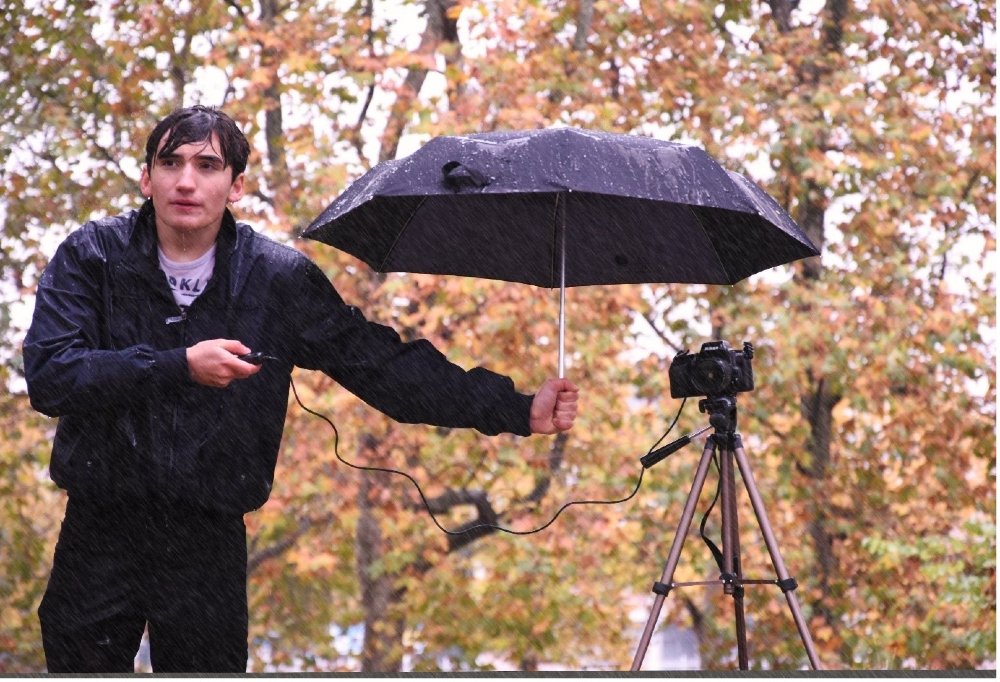

Weather Photography Tips
You can get some amazing photos out there - in spite of, or because of, the weather. Here are some tips to take great photos any time of year. Always have your smartphone with you, and your pro camera too, so you don’t miss a single opportunity.
Photography tips for shooting in the rain
Taking pictures in the rain isn’t easy – fog can prevent clear pictures, you risk getting your equipment wet and, of course, nobody likes getting soaked. You don’t have to leave your camera at home; here are tips for taking photos in the rain.
Before going out, check the local forecast on AccuWeather.com to see when the rain will occur. Once you’re at your destination, have your AccuWeather App ready to time the rain over the next four hours with MinuteCast®. If it’s possible, bump your trip an hour or two if the forecast warrants.
A tripod can be helpful, as typically with rain comes darker conditions and you’ll be using a lower ISO. You can attach an umbrella to your tripod for convenience, but watch out for sudden wind gusts!
If you’re trying to capture the rain itself, you’ll need that sturdy shot when you look for backlight. Don’t forget puddles, which can make for interesting pics.
Bring a few hand towels to wipe things off (paper towels are thin and have a lot of dust on them (shop towels are better). Having a few silica gel packs (they each last about a month) can also be handy when you’re done, and put your camera in a bag or case. You should also leave the zoom lenses extended so they can dry.
If you don’t have a waterproof smartphone or camera, you may need to protect your equipment from the rain. Camera sleeves or lens hoods are recommended, although in a pinch, a shower cap from a hotel or drugstore may work for a sleeve; a small plastic container and a rubber band can approximate a lens hood.
Tips for taking pictures in the winter
Winter can bring some amazing photographic opportunities – from sparkling frost and snowflakes to ice formations.
Of course, you’ll want to check AccuWeather.com for your temperature forecast so you can dress appropriately, and take the app with you (MinuteCast shows snow and ice over the next four hours). If it’s possible, bump your trip an hour or two if the forecast warrants, but don’t forget that when the sun goes down, so do the temperatures.
Dress in layers, including waterproofing if you’re heading into a snowstorm. Don’t forget your hands! To avoid frostbite or frostnip, you’ll need gloves that allow you to operate your smartphone or camera controls. Take breaks to your vehicle or nearby shelters to stay warm.
Smartphones do well in the cold, but if you’re using a camera, keep it relatively cold, to avoid fogging up the lens, and bring extra batteries, which will need to be warmer.
If you’re trying to freeze (pun intended) snowflakes, you’ll need a higher shutter speed. The slower the shutter, the more motion you have, but you’ll have to experiment depending on how fast the snow is falling.
Vary your shots – think about how snow looks on objects or take pictures of people enjoying the cold and snow. Be careful where you tread – footprints in the snow can look great unless you were trying to get that uninterrupted landscape of fresh powder.
Tips for shooting photos in the spring
Spring is a great time of year to take pictures of emerging wildlife and brilliantly colored flowers. Longer daylight hours make for more opportunities but check that forecast on AccuWeather.com and the AccuWeather app before you venture out.
Early morning light can be great to capture fog in late spring, while evenings make for great sunsets and beautiful natural lighting. During the day, remember the sun angle, and make sure the sun is lighting up your subject.
With so much to photograph in the spring, framing the subject of your photograph is crucial. Generally, you want to use the rule of thirds – for example, a close-up of a flower should only use one-third of the photo’s frame.
About the Author:
As Social Media Manager and Senior Weather Editor for AccuWeather, as well as a meteorologist, blogger and photography enthusiast, Jesse Ferrell oversees the strategic management for AccuWeather’s weather news stories and social media channels, creating highly engaging posts that serve as a touchpoint for millions of fans, followers and platform community members. In 2005, Jesse became the first accuweather.com blogger during Hurricane Katrina and remains an active author for weather blogs today.
Before joining AccuWeather, Jesse developed an online group of weather enthusiasts and reporters, WeatherMatrix, where he served as founder and president for almost a decade.
Jesse earned his BSc in Meteorology from the University of North Carolina at Asheville. In his spare time Jesse enjoys chasing storms, photographing weather conditions and spending time with his family.
Follow Jesse @weathermatrix

